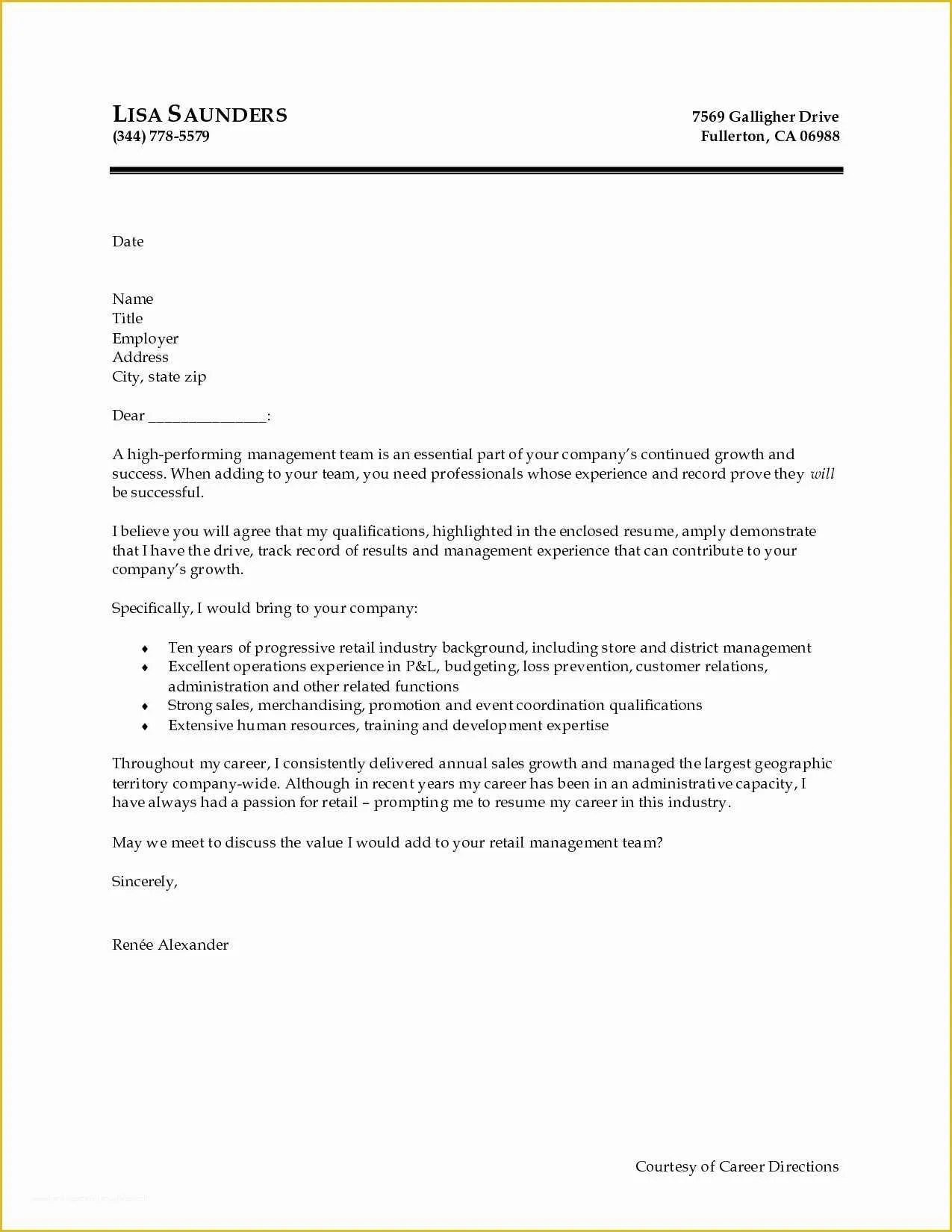What is a Cover Letter?
A cover letter is a crucial document that accompanies your resume when applying for a job. It serves as an introduction to your qualifications and skills, providing an opportunity to showcase your personality, express your interest in the position, and explain why you are the ideal candidate. Unlike a resume, which lists your experiences and qualifications, a cover letter allows you to tell a story, connecting your skills and experiences to the specific requirements of the job. A well-crafted cover letter can significantly increase your chances of getting noticed by a hiring manager and securing an interview, making it an essential part of any job application process. Remember, it’s your first impression on paper, make it count!
Why is a Cover Letter Important?
Cover letters are important for several compelling reasons, playing a vital role in your job application. First and foremost, a cover letter provides context to your resume. It allows you to explain any gaps in your employment history, career changes, or the reasons why you are interested in the specific role. Secondly, it demonstrates your communication skills. The ability to articulate your thoughts clearly and concisely is a highly valued asset in any profession, and a cover letter offers the perfect opportunity to showcase this skill. Thirdly, a cover letter lets you personalize your application, showing the hiring manager that you have taken the time to research the company and understand the role. This personalization can set you apart from other candidates who might be submitting generic applications. In addition, it demonstrates your professionalism and attention to detail. A polished cover letter is a sign that you are serious about the opportunity and willing to put in the extra effort.
Key Components of a Cover Letter
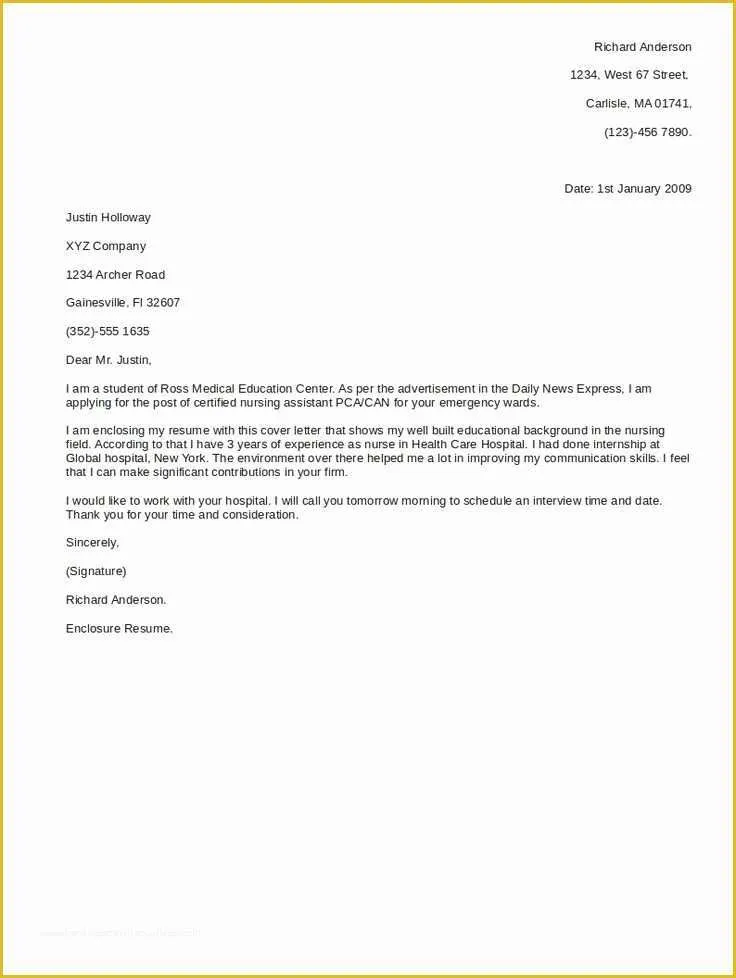
A well-structured cover letter typically includes several key components. These components work together to present a compelling case for your candidacy. Understanding these components will help you craft a cover letter that effectively highlights your skills and experiences. The first section is the header, which includes your contact information and the date. Next, you’ll have a professional greeting, addressing the hiring manager by name if possible. The main body consists of several paragraphs; the introduction states the position you’re applying for and where you found the job posting. Subsequent paragraphs highlight your relevant skills and experience, providing specific examples to demonstrate your abilities. A final paragraph summarizes your interest and calls for an interview. Finally, close with a professional closing and your signature.
Header of a Cover Letter
The header of your cover letter is the first thing a hiring manager sees. It must be clear, concise, and professional. The header should include your full name, address, phone number, and email address. You should also include the date, written below your contact information. This part of the cover letter ensures that the hiring manager can easily contact you. It’s also important to use a professional email address. Avoid using nicknames or unprofessional email handles. The header should be neatly formatted and aligned, usually on the left or right side of the document. Make sure the font is easy to read and consistent with the rest of the letter. This attention to detail demonstrates your organizational skills and respect for the hiring process. (See: cover-letter-header.webp)
Greeting
The greeting, or salutation, sets the tone for the rest of your cover letter. It’s important to address the hiring manager correctly. If you know the name of the hiring manager, use it. “Dear Mr./Ms. [Last Name]” is generally preferred. This shows that you have taken the initiative to find out who will be reviewing your application, personalizing the letter. If you can’t find a name, options include “Dear Hiring Manager” or “Dear [Department Name] Hiring Team.” Avoid generic greetings like “To Whom It May Concern,” as they can make your application feel impersonal. The greeting should be followed by a comma, and the tone should be professional and respectful. The right greeting is crucial in making a positive first impression. (See: cover-letter-introduction.webp)
Body Paragraph 1 The Introduction
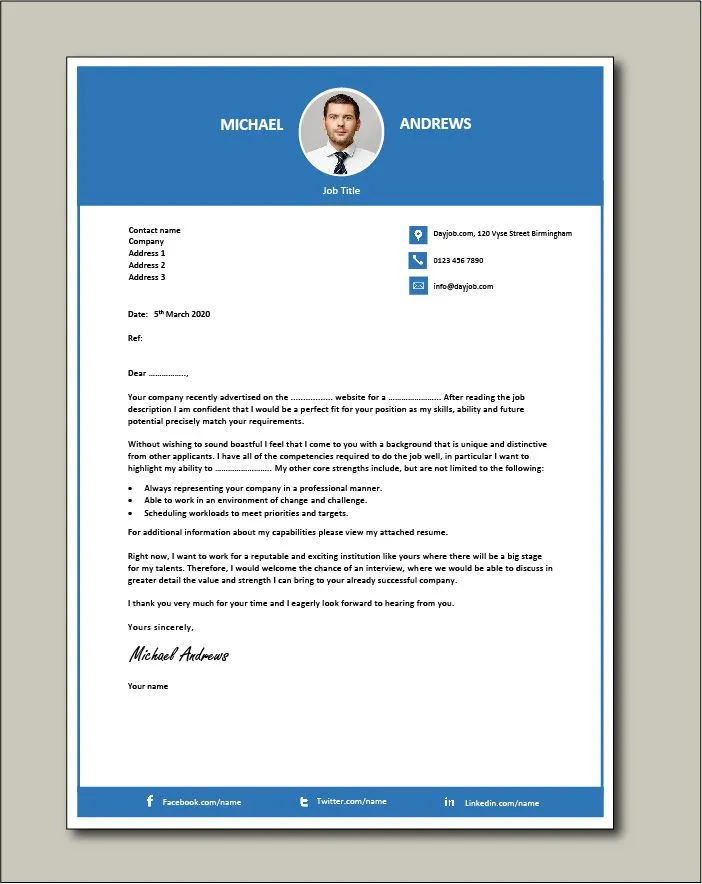
The introductory paragraph is your opportunity to immediately capture the reader’s attention. It should state the position you are applying for and how you found the job posting. Briefly mention your strongest qualifications and express your enthusiasm for the role and the company. Keep it concise, typically around 2-3 sentences. This paragraph sets the stage for the rest of the letter, giving the reader a reason to continue reading. Avoid generic opening lines and instead, aim to make a memorable statement. Use keywords from the job description to demonstrate that you understand what the employer is looking for. This initial impression is critical, so make it count. This paragraph should leave the hiring manager wanting to learn more about you. (See: cover-letter-introduction.webp)
Body Paragraph 2 Skills and Experience
This is where you highlight your skills and experience, focusing on what makes you a great fit for the job. Provide specific examples of your accomplishments and quantify them whenever possible. For instance, instead of saying, ‘I managed projects,’ state, ‘I successfully managed five projects, delivering them on time and under budget.’ Tailor your examples to the specific requirements of the job description. Use action verbs to describe your responsibilities and achievements. This helps the hiring manager visualize your capabilities. Show, don’t just tell; provide concrete evidence to back up your claims. Demonstrate how your skills align with the company’s needs and how you can contribute to their success. (See: skills-and-experience-cover-letter.webp)
Body Paragraph 3 Why You’re a Fit
In this paragraph, elaborate on why you are the perfect fit for the company. Explain how your values align with the company culture and what you hope to achieve in the role. Show that you have researched the company and understand its mission, values, and recent projects. Mention specific aspects of the company that appeal to you. This demonstrates genuine interest and helps you stand out from other applicants. This is also an excellent place to highlight any unique skills or experiences that make you stand out. Reiterate your enthusiasm for the opportunity and your commitment to the company’s success. This paragraph closes the body of your letter and sets the tone for your conclusion. (See: cover-letter-closing.webp)
Closing and Call to Action
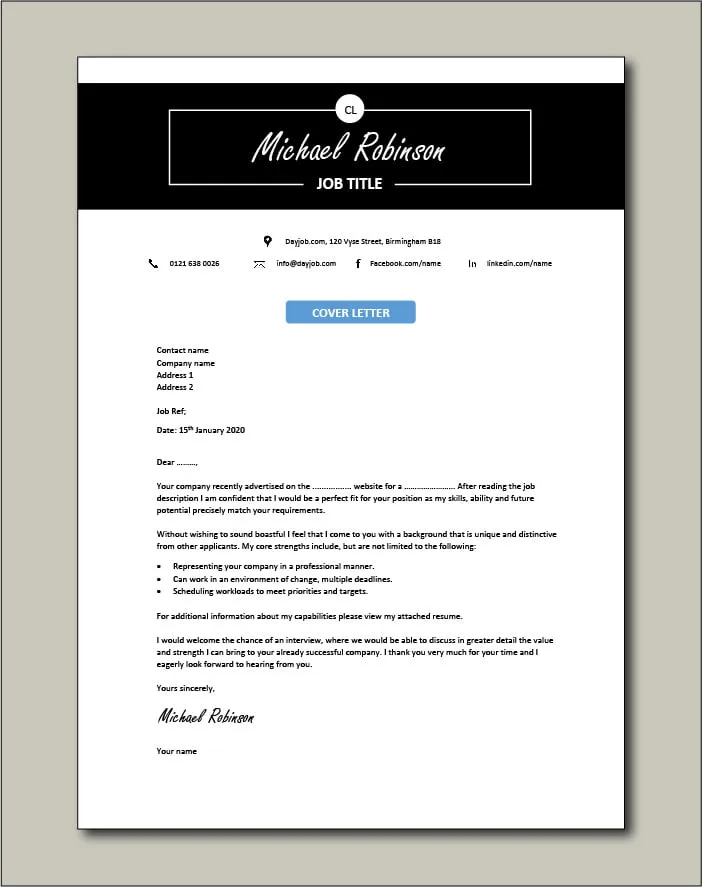
Your closing should reiterate your interest in the position and thank the hiring manager for their time and consideration. Include a clear call to action, such as requesting an interview. Be polite, professional, and enthusiastic. End the letter with a professional closing such as “Sincerely” or “Best regards,” followed by your signature (if printing the letter) and your typed name. It’s important to proofread your cover letter one last time to ensure that it is free of any errors. The conclusion is your last chance to make a positive impression. Ensure that your closing is professional and memorable. (See: cover-letter-closing.webp)
Types of Free Cover Letter Examples
There are many different types of free cover letter examples available to suit various needs. These examples are valuable resources that can guide you in crafting your own cover letter. Examples are categorized by the level of experience, industry, and the specific job requirements. Understanding these different types will help you choose the best template and adapt it to your specific situation. Here are some common examples. You can find templates tailored for entry-level positions to those for experienced professionals. They provide examples for specific fields such as marketing, finance, and engineering. You can find examples highlighting specific skills, such as communication or project management. And finally, you can discover templates tailored for career changes or for situations where you need to explain employment gaps.
Entry-Level Cover Letter Example
An entry-level cover letter is designed for individuals with little or no professional experience. It should focus on transferable skills, educational achievements, and any relevant extracurricular activities or volunteer work. The goal is to demonstrate your potential and enthusiasm. Use the examples to highlight skills that are relevant to the role, such as communication, teamwork, or problem-solving. The example shows you how to emphasize your academic accomplishments, internships, and any projects that align with the job requirements. The tone should be enthusiastic and confident, showing your willingness to learn and contribute. (See: entry-level-cover-letter.webp)
Example for a Specific Job Application
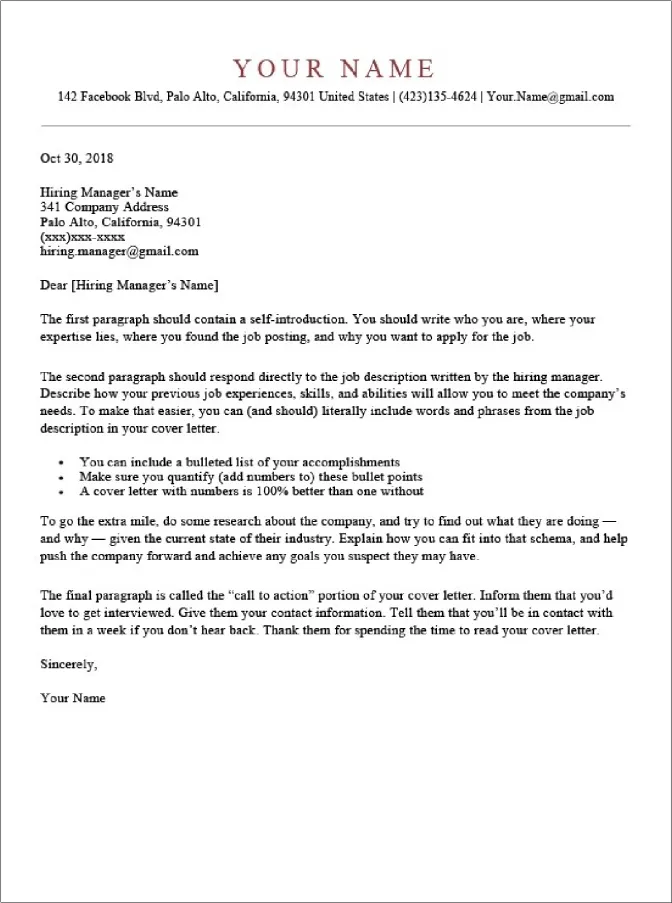
A job-specific cover letter is tailored to the specific requirements of a particular job posting. This type of cover letter demonstrates that you have carefully read the job description and understand what the employer is looking for. The example provides guidance on how to highlight the key skills and experiences mentioned in the job description. This involves using keywords from the job posting and providing concrete examples of how you have demonstrated those skills in the past. The tone should be professional and focused, with a clear emphasis on how you can meet the needs of the role. It demonstrates to the hiring manager that you have done your research and are genuinely interested in the position. (See: job-specific-cover-letter.webp)
Example Highlighting Skills
A skills-based cover letter is designed to emphasize your abilities, especially useful if you are changing careers or if your work experience is less directly related to the job. The example helps you to identify and highlight your transferable skills. It demonstrates how to provide specific examples of how you have used those skills to achieve results in past roles. The focus is on what you can do rather than where you have done it. The tone should be confident and results-oriented. It’s a way to show employers that your skills can contribute to their company. This type of cover letter is very effective in helping you stand out from candidates whose experience may be more directly relevant but who may not have a similar skill set. (See: skills-cover-letter.webp)
Where to Find More Free Cover Letter Examples
There are numerous online resources where you can find free cover letter examples and templates. These resources provide a valuable starting point, offering a variety of formats and styles to suit different job applications. Using these resources can save you time and effort in the writing process. Some of the best places to find free cover letter examples include professional career websites, online job boards, and educational institutions. These resources are often updated regularly. By exploring these resources, you can gain inspiration and adapt examples to your needs. Always tailor any example to fit your personal qualifications and the specific job you are applying for. Make sure that you customize the examples to match your unique skills and experience, and make sure to include your own details. This approach ensures that your cover letter is both effective and authentic, helping you to stand out from other candidates.
Websites with Free Cover Letter Templates
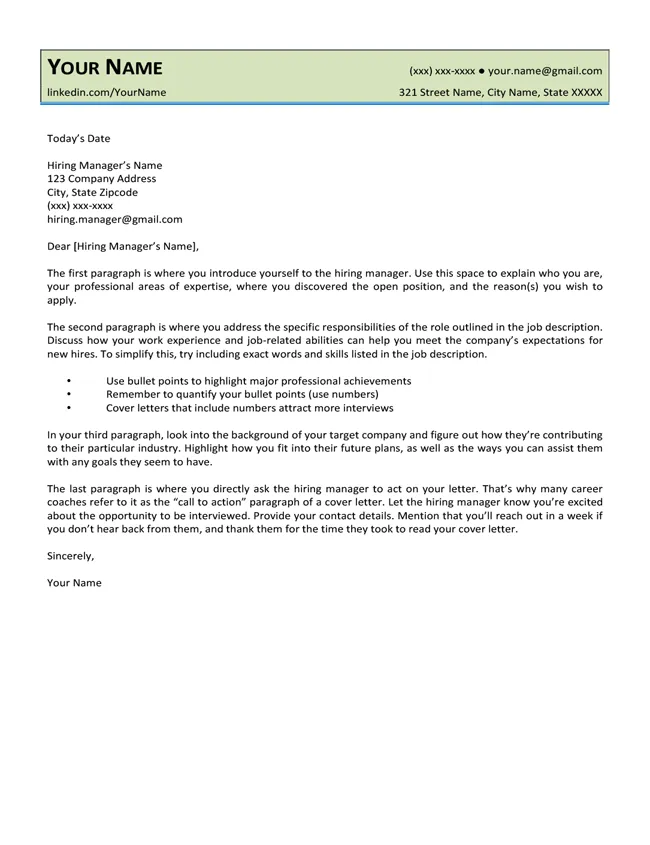
Several websites offer a wide selection of free cover letter templates, allowing you to choose a format that suits your style. These websites can simplify the writing process. They provide pre-formatted templates that you can easily customize with your information. Some of the popular websites include LinkedIn, Indeed, and Resume.com. They offer a variety of templates, from modern to classic. When choosing a template, consider your industry, the type of job, and your personal preferences. Look for templates that are easy to read and visually appealing. You should also ensure that the template is compatible with your word processor and that you can easily modify the text and layout. Customizing the template with your information is essential, including your name, contact details, and job-specific information. This ensures that your cover letter accurately reflects your qualifications and enhances your chances of making a strong impression on the hiring manager.
Tips for Customizing Your Cover Letter
Customizing your cover letter is essential for making a positive impression. Generic cover letters often get overlooked, so tailoring your letter to each job application is crucial. Start by researching the company and the specific role. Understanding the company’s values and the requirements of the job will help you tailor your letter effectively. Use keywords from the job description to demonstrate that you meet the employer’s needs. Highlight your relevant skills and experiences, providing specific examples of your achievements. Don’t just list your skills; show how you have used them in the past. Customize the tone of your letter to match the company culture. Ensure your letter is easy to read and well-organized. Proofread the letter carefully for any errors. Customize your cover letter to make it unique and tailored to the specific job you are applying for.
Proofreading and Editing
Proofreading and editing are critical steps in the cover letter writing process. These steps ensure that your letter is free of errors and conveys professionalism. Mistakes can undermine your credibility and reduce your chances of getting an interview. Carefully review your cover letter for grammatical errors, spelling mistakes, and typos. Read the letter aloud to catch any awkward phrasing or unclear sentences. Make sure that the formatting is consistent throughout the document. Consider using grammar and spell-checking tools to identify any potential errors, but always review the results manually. Consider asking a friend, family member, or career counselor to proofread your cover letter. Fresh eyes can often spot mistakes that you might have missed. A polished cover letter is a sign that you pay attention to detail, showing that you are serious about the job opportunity. (See: proofreading-cover-letter.webp)
Formatting
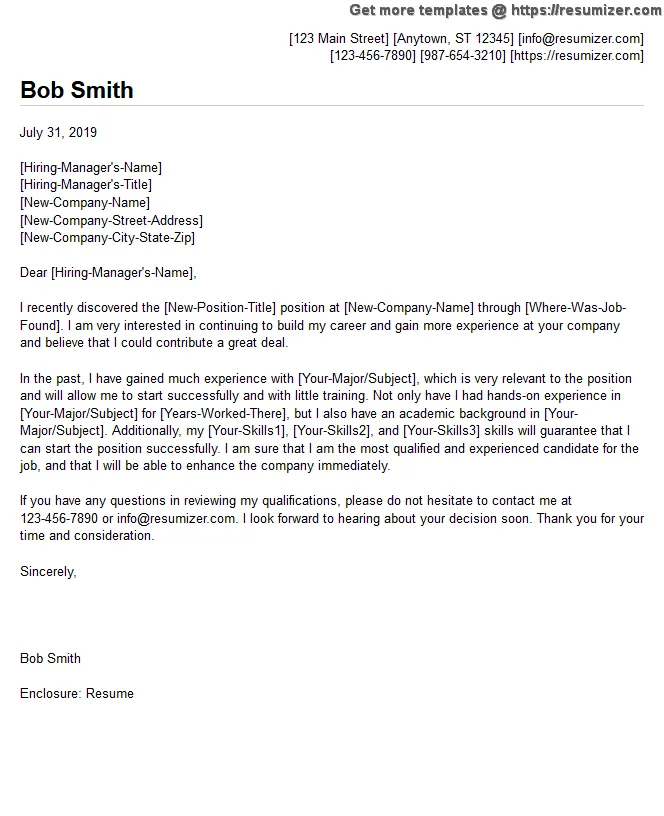
Formatting your cover letter appropriately is crucial for readability and professionalism. Choose a professional and easy-to-read font, such as Times New Roman, Arial, or Calibri, with a font size between 10 and 12 points. Use single spacing for the body of the letter and double spacing between paragraphs. Align the text to the left, avoiding full justification, which can create uneven spacing. Use clear and concise language, avoiding jargon and overly complex sentences. Break up the text into well-defined paragraphs to make it easier to read. Ensure that the header, greeting, closing, and signature are correctly formatted. Use consistent formatting throughout the document, with bolding or italics for emphasis. Proper formatting shows that you take pride in your presentation. A well-formatted cover letter is easier to read and leaves a positive impression on the hiring manager.
Final Thoughts on Free Cover Letter Examples
Utilizing free cover letter examples is a valuable strategy in your job search. They provide a solid foundation and guidance for creating a compelling cover letter. While examples are a great starting point, always customize them to reflect your unique skills, experiences, and the specific requirements of the job. Remember to proofread and edit your cover letter thoroughly to ensure that it is free of errors. A well-crafted cover letter can significantly increase your chances of securing an interview. By following these tips, you can use free cover letter examples effectively. Approach the process with creativity and strategic personalization to maximize your job search success. Good luck with your job applications!
